Hardcover
1737 · Venice
by Ignatius, of Loyola, S.J., Saint (1491-1556)
Venice: Giovanni Radici, 1737. Hardcover. Fine. Illustrated with twenty-five full-page engravings in the text. With a woodcut Jesuit device on the title page. Inquisitor’s approbation on the recto of the final leaf, verso with publisher’s advertisement. Bound in contemporary stiff parchment (lightly soiled, corners bumped, small defects at head and tail of spine). A fine copy with scattered marginal soiling and a few small marginal stains. Edges sprinkled red.
The “Spiritual Exercises” of Ignatius of Loyola, founder of the Jesuit Order, accompanied by a brief guide to meditating upon the ‘Exercises’. The principles of this guide are drawn from the Exercises themselves, according to the rules of meditation laid out by Ignatius, which he received from the Holy Spirit when he first began his spiritual journey. This spiritual wisdom, in turn, inspired the Exercises, and it is through the Exercises that this wisdom is shared with those who undertake them.
The 25 illustrations - the first series of images conceived specifically to illustrate the “Spiritual Exercises”- are copies of a suite of engravings first published in 1649. The engraving of the Crucifixion is derived ultimately from an image by the Flemish painter Peter Paul Rubens, a major light in the Counter-Reformation production of Jesuit imagery.
Symbolic Imagery as Spiritual Aid:
Like the written guide to meditation, the images in this edition are auxiliary tools to help the exercitant perform the exercises.
For example, the fourth engraving, of a hand with the palm facing the reader with the heading “Examen conscientiae” is a mnemonic image of the five fundamental points of the examination of conscience. (Exer. Spir. 43). On the palm of the hand is written a verse from Psalm 118: “Anima mea in manibus meis semper”(“My soul is always in my own hands”). On each finger there is a small, numbered scene that describes one phase of the examination. The numbers that accompany each of the smaller images correspond to brief instructions at the foot of the engraving, each of which prompts the exercitant to recall the full instructions found in the text of the Exercises: 1. “Gratias age”: a man kneeling praying to the Lord (Give thanks to our Lord for the gifts we receive). 2. “Pete lumen”: a man kneeling praying to the Holy Spirit (Seek God’s grace so that we may know and make penance for our sins). 3. “Examina”: a kneeling man writes in a book while contemplating Christ in Heaven (Take an inventory of the sins we have committed this day, whether by thought, word, or action). 4. “Dole”: a man kneels before an altar, his eyes fixed on an image of the Crucifixion (Seek forgiveness for our sins). 5. “Propone”: a soldier brandishing his sword against an animal (Determined to improve ourselves, through Divine Grace.)
Other engravings are more straight-forward and easily interpreted. For example, the seventh engraving, with the subscription “in fine illorum inferi, tenebrae et poena” (In the end, Hell, darkness, and punishment), is a vivid reminder of the consequences of sin (Exer. Spir. 71). In the foreground is the infernal abyss, where damned souls writhe in flames. On the edge is seated a devil who, with the sound of his flute, attracts a sinner towards himself. The sinner is depicted as a blindfolded man who approaches on all fours with his hands chained, and on whose back is seated a devil. The devil drives the sinner on, whipping him with a scourge. The sinner also carries on his shoulders two baskets full of animals that symbolize the sins he has committed. Two other devils take part in the scene, ready to intervene, one with a scourge and the other with a mirror, in case the sinner wants to look back and think about what he has lost.
For more, see Lydia Salviucci Insolera, “Le illustrazioni per gli Esercizi Spirituali intorno al 1600” in Archivum Historicum Societatis Iesu. (Vol. LX, 1991), p. 174 ff.
The Spiritual Exercises:
"The 'Spiritual Exercises' encapsulated the essence of Ignatius' own spiritual turn-around and presented it in a form meant to guide others to analogous changes of vision and motivation. Ignatius used the 'Exercises' as the primary means of motivating his first disciples and prescribed it as an experience for all who later entered the Society of Jesus. Although at no point intended exclusively for Jesuits, the 'Exercises' remain the document that told Jesuits on the most profound level what they were and what they were supposed to be. Furthermore, the 'Exercises' set the pattern and goals of all the ministries in which the Society engaged, even though it was not always explicitly recognized as doing so. There is no understanding the Jesuits without reference to that book." (John W. O'Malley, "The First Jesuits", p. 4). (Inventory #: 5294)
The “Spiritual Exercises” of Ignatius of Loyola, founder of the Jesuit Order, accompanied by a brief guide to meditating upon the ‘Exercises’. The principles of this guide are drawn from the Exercises themselves, according to the rules of meditation laid out by Ignatius, which he received from the Holy Spirit when he first began his spiritual journey. This spiritual wisdom, in turn, inspired the Exercises, and it is through the Exercises that this wisdom is shared with those who undertake them.
The 25 illustrations - the first series of images conceived specifically to illustrate the “Spiritual Exercises”- are copies of a suite of engravings first published in 1649. The engraving of the Crucifixion is derived ultimately from an image by the Flemish painter Peter Paul Rubens, a major light in the Counter-Reformation production of Jesuit imagery.
Symbolic Imagery as Spiritual Aid:
Like the written guide to meditation, the images in this edition are auxiliary tools to help the exercitant perform the exercises.
For example, the fourth engraving, of a hand with the palm facing the reader with the heading “Examen conscientiae” is a mnemonic image of the five fundamental points of the examination of conscience. (Exer. Spir. 43). On the palm of the hand is written a verse from Psalm 118: “Anima mea in manibus meis semper”(“My soul is always in my own hands”). On each finger there is a small, numbered scene that describes one phase of the examination. The numbers that accompany each of the smaller images correspond to brief instructions at the foot of the engraving, each of which prompts the exercitant to recall the full instructions found in the text of the Exercises: 1. “Gratias age”: a man kneeling praying to the Lord (Give thanks to our Lord for the gifts we receive). 2. “Pete lumen”: a man kneeling praying to the Holy Spirit (Seek God’s grace so that we may know and make penance for our sins). 3. “Examina”: a kneeling man writes in a book while contemplating Christ in Heaven (Take an inventory of the sins we have committed this day, whether by thought, word, or action). 4. “Dole”: a man kneels before an altar, his eyes fixed on an image of the Crucifixion (Seek forgiveness for our sins). 5. “Propone”: a soldier brandishing his sword against an animal (Determined to improve ourselves, through Divine Grace.)
Other engravings are more straight-forward and easily interpreted. For example, the seventh engraving, with the subscription “in fine illorum inferi, tenebrae et poena” (In the end, Hell, darkness, and punishment), is a vivid reminder of the consequences of sin (Exer. Spir. 71). In the foreground is the infernal abyss, where damned souls writhe in flames. On the edge is seated a devil who, with the sound of his flute, attracts a sinner towards himself. The sinner is depicted as a blindfolded man who approaches on all fours with his hands chained, and on whose back is seated a devil. The devil drives the sinner on, whipping him with a scourge. The sinner also carries on his shoulders two baskets full of animals that symbolize the sins he has committed. Two other devils take part in the scene, ready to intervene, one with a scourge and the other with a mirror, in case the sinner wants to look back and think about what he has lost.
For more, see Lydia Salviucci Insolera, “Le illustrazioni per gli Esercizi Spirituali intorno al 1600” in Archivum Historicum Societatis Iesu. (Vol. LX, 1991), p. 174 ff.
The Spiritual Exercises:
"The 'Spiritual Exercises' encapsulated the essence of Ignatius' own spiritual turn-around and presented it in a form meant to guide others to analogous changes of vision and motivation. Ignatius used the 'Exercises' as the primary means of motivating his first disciples and prescribed it as an experience for all who later entered the Society of Jesus. Although at no point intended exclusively for Jesuits, the 'Exercises' remain the document that told Jesuits on the most profound level what they were and what they were supposed to be. Furthermore, the 'Exercises' set the pattern and goals of all the ministries in which the Society engaged, even though it was not always explicitly recognized as doing so. There is no understanding the Jesuits without reference to that book." (John W. O'Malley, "The First Jesuits", p. 4). (Inventory #: 5294)
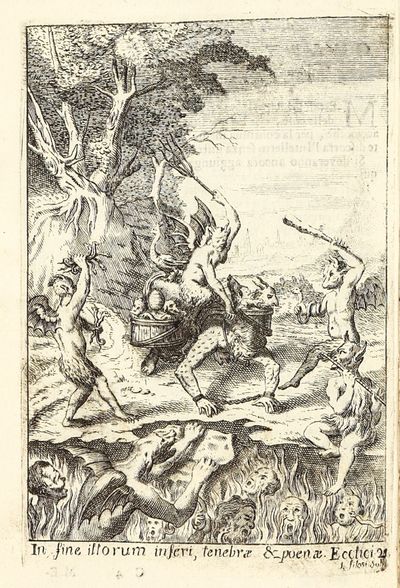
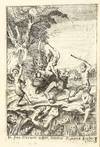

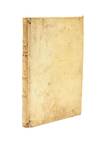
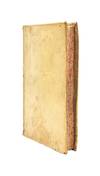

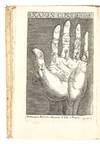
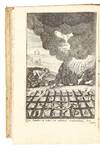
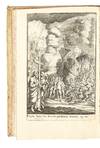
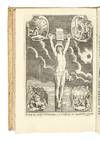
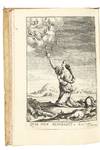
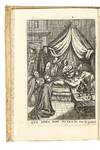
![Bartholinus anatomy; made from the precepts of his father, and from the observations of all modern anatomists, together with his own. With one hundred fifty and three figures cut in brass, much larger and better than any have been heretofore printed in English. In four books and four manuals, answering to the said books. Book I. Of the lower belly. Book II. Of the middle venter or cavity. Book III. Of the uppermost cavities, viz. The head. Book IV. Of the limbs. The four manuals answering to the four foregoing books. Manual I. Of the veins, answering to the firs book of the lower belly. Manual II. Of the arteries, answering to the second book of the middle cavity or chest. Manual III. Of the nerves, answering to the third book of the head. Manual IV. Of the bones, answering to the fourth book of the limbs. Als [sic] two epistles of the circulation of the blood. Published by Nich. Culpeper gent. and, Abdiah Cole doctor of physick](https://d3525k1ryd2155.cloudfront.net/h/170/812/1692812170.0.m.jpg)
